Nestled in the heart of Provence, Arles is a city that effortlessly blends ancient history with vibrant
contemporary culture. Known for its stunning Roman architecture, artistic heritage, and picturesque landscapes,
Arles offers something for every traveler - from daytrippers visiting from nearby larger cities (Marseille,
Nice, etc.) to artists looking for a quiet, intimate place to do a residency. From exploring UNESCO World
Heritage sites to immersing yourself in the complex world of Vincent van Gogh, the city's charm lies in its
ability to transport visitors through time while offering a plethora of modern attractions. Whether you are a
history buff, an art enthusiast, or simply looking to soak up the Provencal atmosphere, Arles promises to be
unforgettable but also profoundly emotional as past and present merge uncannily and occasionally unexpectedly.
1. Espace Van Gogh
 Courtesy of Flicker.
Courtesy of Flicker.
At his insistence, my partner and I arrived at Arles at 8 am in the morning on a Saturday which I would
attribute to a rookie mistake except for the fact that he is in fact thoroughly, incontestably French and should
have known better. Left with empty streets (save a handful of Americans and Germans), firmly closed pastel
shutters, a delicate breeze wisping in off of the Rhone river, and two full hours until anything was remotely
open, we sought out a tabac, shared coffee and cigarettes and read our respective vacation novels. An hour later
and bored to tears by a genuinely horrific bestseller, I gave up on waiting and forced my partner to accompany
me to the only open space I could find, the Espace Van Gogh. Composed of the asylum in which the artist was
held, the space was quiet and florid, the panoply of colors from the garden in the courtyard cast a mosaic of
reflected light on the white and yellow trimmed walls as though there were no flowers rooted in the center but
rather stained glass. The serene beauty of the space was punctuated by its past life as a 19th century hospital
where Van Gogh was treated after cutting off his ear following an intense argument with Paul Gaugin and
suffering a series of violent hallucinations, which according to some scholars, were connected to the sun.
Regardless of the beauty, his despair seemed palpable, nestled away in the unlit upstairs room, the darkened
corridors that led inside and conflicted with the in-pouring light. Having read The Letters of Vincent Van Gogh,
the space brought me to tears as it manifested the duality of his selfhood; the levity of the upward-arching
flowers and bright blue paint enrobing the windowsills, the yellow delineating the perimeter of the second floor
mezzanine, the crepuscular shadows staring out from the windows without glass, the unpersoned bench, the
silence.
For those interested in not having your heart lacerated at 9 in the morning, the space also houses a variety of
exhibitions, art workshops, and cultural events, fostering an ongoing appreciation for the arts within the
community of Arles. Before you go, watch “At Eternity’s Gate,” (2018) by Julian Schnabel in which Willem Defoe
gives the performance of a lifetime as Van Gogh himself, a scene from which was shot in the Espace Van Gogh as
well - viewer discretion, as in you should have a box of tissues within trembling arm’s reach - is advised.
2. Fondation Vincent Van Gogh
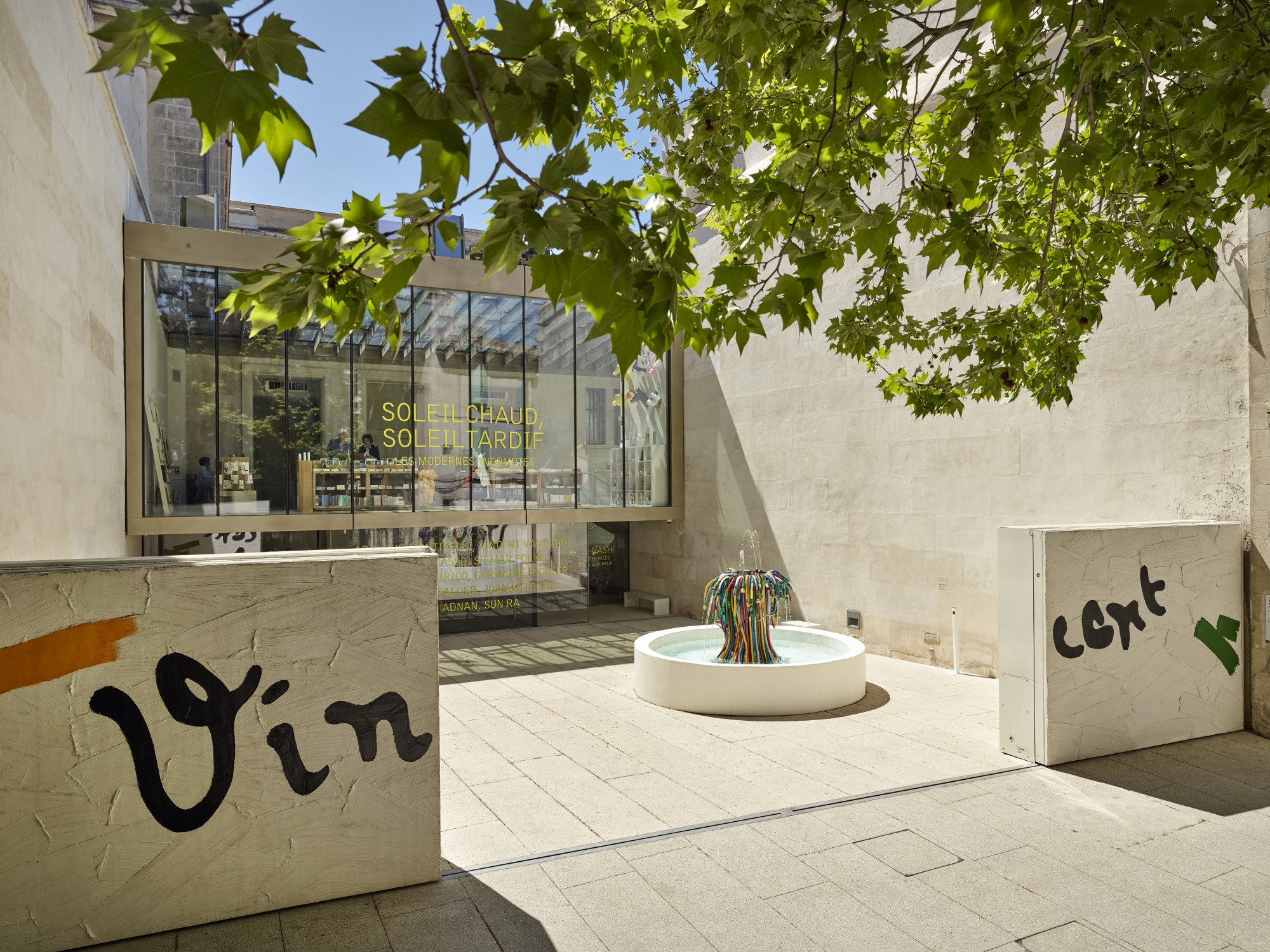 Courtesy of Réseau Plein Sud
Courtesy of Réseau Plein Sud
Not to be confused with l’Espace Van Gogh, the Fondation Vincent van Gogh in Arles is a necessary experience for
all artists and art lovers making a pilgrimage to the city. This contemporary museum is dedicated to celebrating
Van Gogh’s complicated yet adoring connection to Arles, the birthplace of his most renowned works. The
foundation showcases a rotating collection of Van Gogh’s masterpieces alongside exhibitions of contemporary
artists influenced by his legacy. The museum itself is located within an exquisitely restored 15th century
building, and offers an interesting fusion of Renaissance architecture and modern design.
3. Théâtre Antique d’Arles
 Courtesy of France Bleu
Courtesy of France Bleu
Again, not to be visited too early in the morning on account of the intensity of its haunting façade glimpsed
under morning (perhaps mourning) clouds and at its most dew-misted, naked and empty, bare boned and seemingly
haunted. Later in the day however and in greater company, a visit to the Théâtre Antique d’Arles becomes an
enriching experience for history lovers and performing arts enthusiasts. Built in the first century BC, this
ancient Roman theater is a remarkable example of Roman architecture and cultural influence in Gaul. Originally
seating around 10,000 spectators, the theater was a hub for drama, music, and public gatherings. Today, visitors
can wander through the ruins, marvel at the grand stage, and envision the vibrant performances that once
captivated ancient audiences. The site’s ongoing excavations and restorations offer insights into its historical
significance and architectural prowess. The Théâtre Antique d’Arles also hosts contemporary cultural events,
creating a unique fusion of ancient ambiance and modern artistic expression.
4. Arènes d’Arles
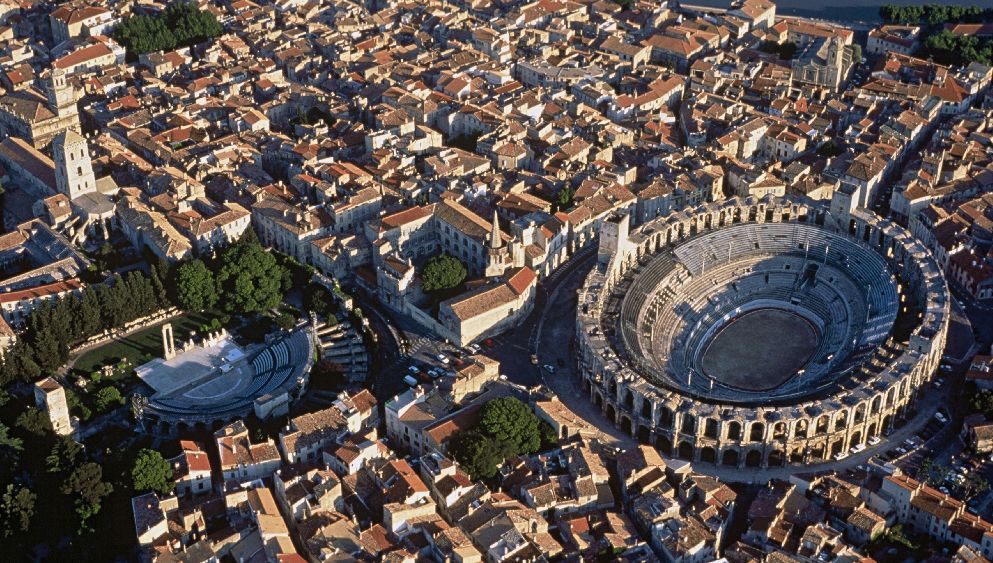 Courtesy of France Bleu
Courtesy of France Bleu
Whether you’re a history buff interested in ancient architecture or just want to catch a real-life gladiator
reenactment, exploring the Arènes d’Arles is a must during your trip to Arles. This ancient Roman amphitheater
dates back to the first century AD and stands as a sunbleached, venerable testament to the innovative ingenuity
of Roman engineering and performances of brutality. Capable of hosting over 20,000 spectators in its Pax Romana
heyday, the amphitheater hosted bloody gladiatorial contests and other public spectacles. Today, the
immaculately-preserved structure permits visitors to walk the same haunted and hallowed halls as both the
spectators and the gladiators, the ghostly echoes of cheers, cries of agony, and lamentations reverberate
through the cold white walls - I say this as a historian, as a tourist I enjoyed it, I promise. The arena itself
is still used to this day as a mainstay of Arles’ cultural life, hosting retrofitted concerts, and
controversially, bull fights (for the Hemingways among us), among other events. Just remember to wear shoes with
good soles (aka NOT platform espadrilles - a fault of my hubris), a hat and sunscreen if you plan on sticking
around (not with a literal spear hopefully) for the gladiator reenactments.
5. Place du Forum and the Night Cafe, AKA Le Cafe Van Gogh
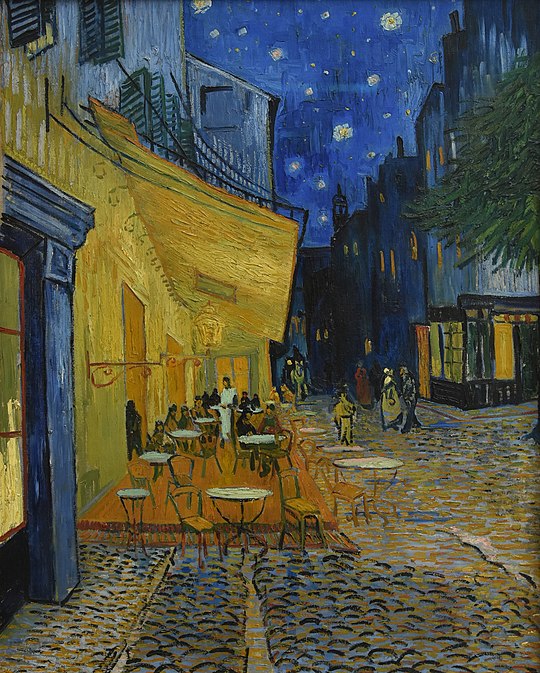 Courtesy of the Kröller-Müller Museum
Courtesy of the Kröller-Müller Museum
When I told my dad I was going to Arles, the first thing he said was a plea to visit the site that inspired one
of his favorite paintings of all time, Vincent Van Gogh’s “The Night Café,” perhaps not as ubiquitously known as
“Starry Night,” but equally as limpid and beautiful. My dad asked me to go back at night but alas my partner and
I were restricted to a day trip and the cafe itself wasn’t open. Nonetheless, there were plenty of other
attractions surrounding the cafe including the Place du Forum which comprises the heart of this historic city.
The bustling square was, in the olden days, the center of Roman life in Arles and continues this legacy through
its lively cafes, restaurants, and specialty shops that encompass the square. Remnants of the ancient Roman
forum can be glimpsed within and around the modern forum. Whether you're savoring a meal at a sidewalk cafe,
exploring local shops, or simply soaking in the lively atmosphere, the Place du Forum offers a quintessential
Provençal experience that beautifully merges the past and present.
6. Musée Arlaten
 Courtesy of Made in Marseille
Courtesy of Made in Marseille
A bit off the beaten path but indubitably worth your while, the Musée Arlaten in Arles is essential for anyone
interested in Provençal culture and history. Established by the acclaimed poet Frédéric Mistral in 1896, this
ethnographic museum provides a fusion of the ancient and the modern, showcasing the traditions, customs and the
daily life of the people of Provence all encased within the luxurious halls of a 16th-century mansion. The
museum itself contains an extensive collection of artifacts such as traditional costumes, furniture, tools, and
art that proudly demonstrate the rich heritage of the region. The Musée Arlaten not only preserves and
celebrates the cultural identity of Provence but also provides an enriching, immersive experience that
highlights the unique charm and historical significance of the region.
7. Cathédrale Saint-Trophime
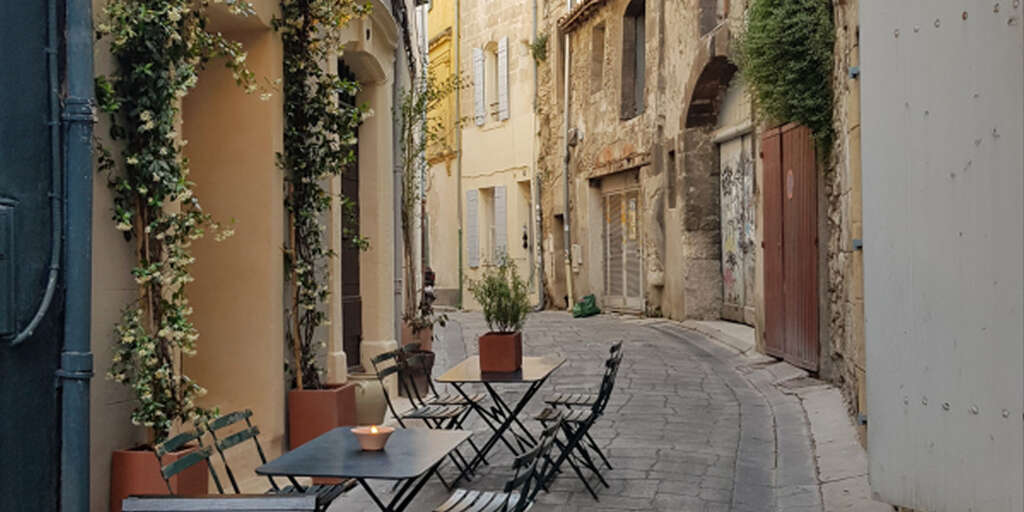 Courtesy of Wikimedia Commons
Courtesy of Wikimedia Commons
Visiting the Cathédrale Saint-Trophime in Arles is a must for anyone interested in history, architecture, and
art. This magnificent Romanesque structure, with its origins dating back to the 12th century, offers a stunning
display of medieval craftsmanship. The cathedral's intricate facade, adorned with detailed sculptures depicting
biblical scenes reflects the artistry of the period. Inside, the serene ambiance is complemented by beautiful
Gothic elements and well-preserved religious relics. The cathedral is also part of the UNESCO World Heritage
Sites, which include the historic center of Arles and its Roman and Romanesque monuments, consecrating it as a
significant cultural landmark.
8. Nuit étoilée sur le Rhône
 Courtesy of Musée d’Orsay
Courtesy of Musée d’Orsay
Recreate the iconic “Starry Night” (1888) currently located in the Musée d’Orsay by visiting the quai along the
long river Rhône that runs limpidly through Arles. By day, the quais are rather brutalist but at night Van
Gogh’s vision comes alive, demonstrating how he found beauty in everything regardless of, or rather, in spite of
the fact that he felt consistently if not constantly plagued by tragedy.
4. Arènes d’Arles
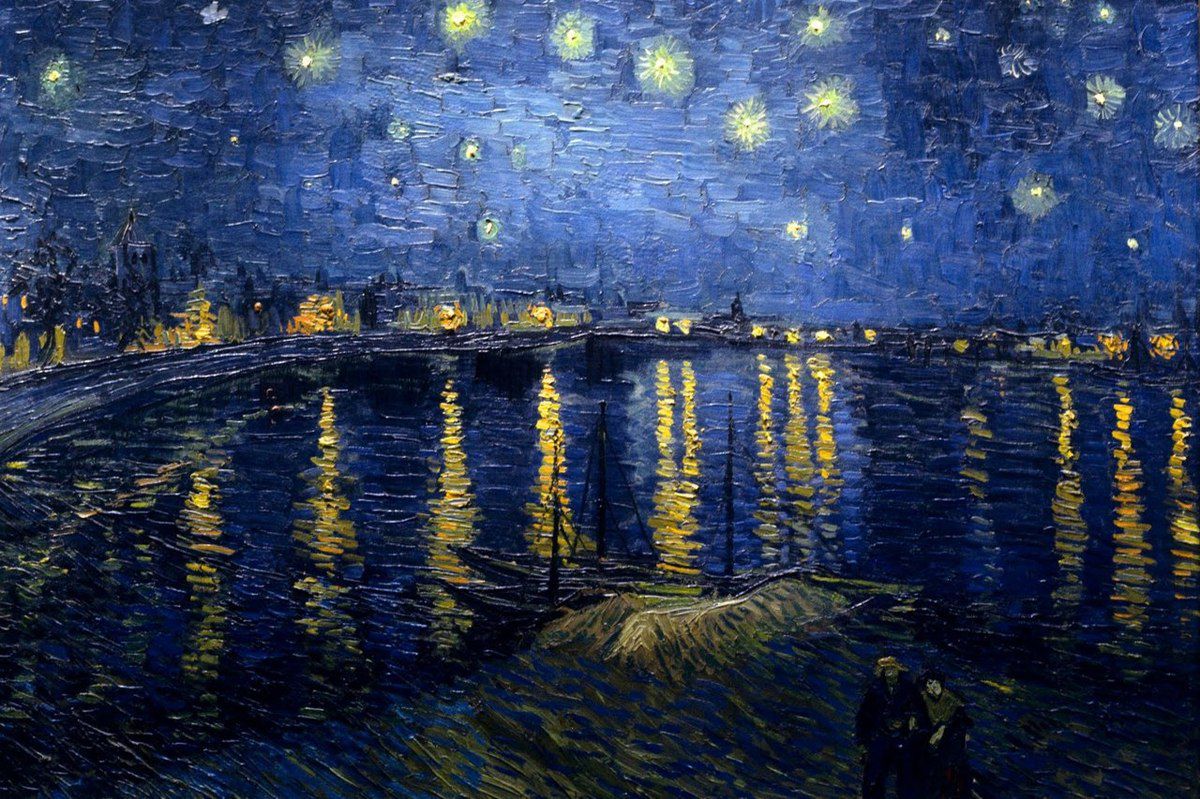 Courtesy of France Bleu
Courtesy of France Bleu
Whether you’re a history buff interested in ancient architecture or just want to catch a real-life gladiator
reenactment, exploring the Arènes d’Arles is a must during your trip to Arles. This ancient Roman amphitheater
dates back to the first century AD and stands as a sunbleached, venerable testament to the innovative ingenuity
of Roman engineering and performances of brutality. Capable of hosting over 20,000 spectators in its Pax Romana
heyday, the amphitheater hosted bloody gladiatorial contests and other public spectacles. Today, the
immaculately-preserved structure permits visitors to walk the same haunted and hallowed halls as both the
spectators and the gladiators, the ghostly echoes of cheers, cries of agony, and lamentations reverberate
through the cold white walls - I say this as a historian, as a tourist I enjoyed it, I promise. The arena itself
is still used to this day as a mainstay of Arles’ cultural life, hosting retrofitted concerts, and
controversially, bull fights (for the Hemingways among us), among other events. Just remember to wear shoes with
good soles (aka NOT platform espadrilles - a fault of my hubris), a hat and sunscreen if you plan on sticking
around (not with a literal spear hopefully) for the gladiator reenactments.